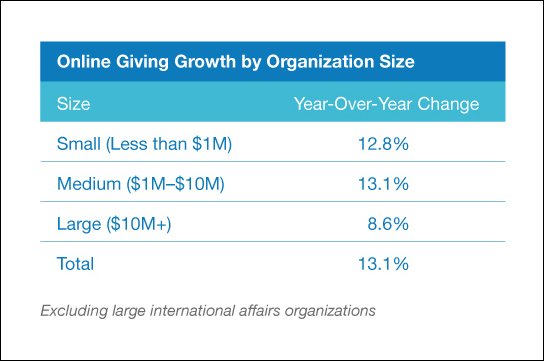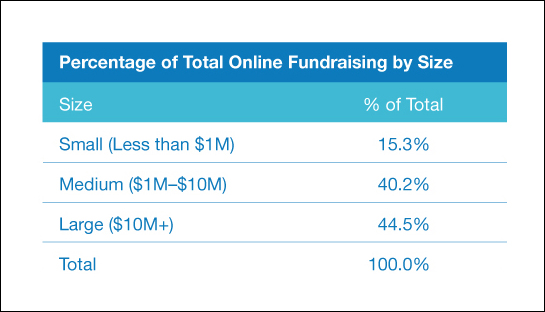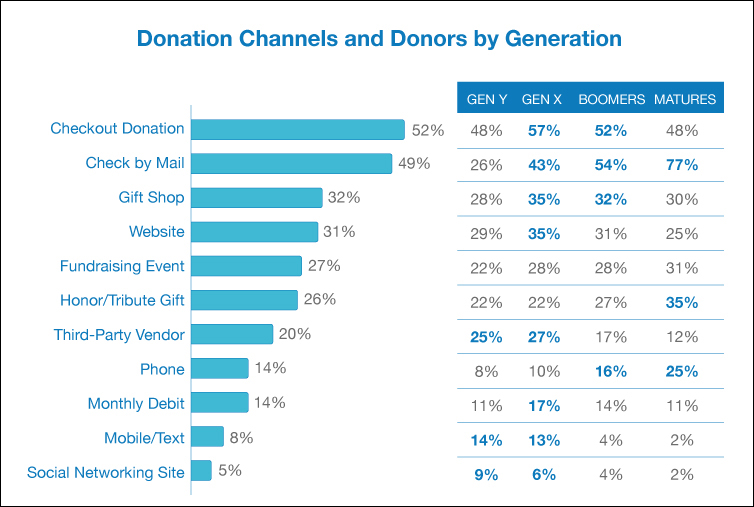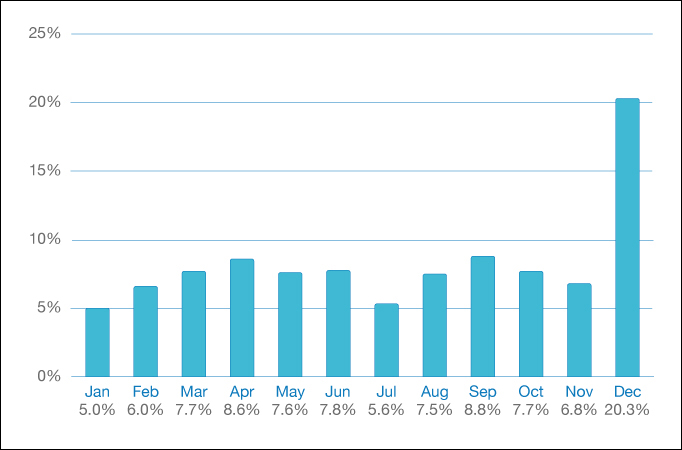3. What Makes Donors Click
A fortunate few nonprofits have the luxury of conducting market research to glean insights about their donors, or to test various fundraising approaches to see which work best. In scrappier organizations, donation requests might be produced by the same person who answers the phone, wrangles volunteers, and takes the trash out.
It may take more effort for smaller groups to zero in on what motivates their supporters to click the Donate button, but leaders in the nonprofit sector have plenty of tips to minimize guesswork.
Read on for some of their best practices.
Why People Give—Science Has Its Say
Why do people give to charity, anyway? Or give to their alma mater, or their professional association, or an unemployed acquaintance whose puppy got hit by a car?
There are lots of reasons, from quite lofty to stunningly simple. First up: lofty. According to nonprofit experts Katya Andresen, Alia McKee, and Mark Rovner (see sidebar), biology has encouraging news for the fundraisers of the world:
• Humans are genetically hardwired to help each other. It seems that goodness is an adaptive trait that has helped us survive as a species. (See? Lofty.)
• People are also wired for empathy. When we see images or hear stories about other people’s plights, we experience them as if they were our own, and we want to make things better.
• When we act on these impulses, we activate the pleasure centers of our brain. Giving makes us feel good!
Here’s more donor behavior insight from Andresen, McKee, and Rovner:
• Emotions prevail when it comes to motivating people to give to causes. Example: One of McKee’s nonprofit clients started a program to call a wide group of donors to thank them personally for their support.
Half of the donors got a gracious call from a staff member in the organization. The other half received calls from Bhutanese refugees who had resettled in the United States with the organization’s help.
Not surprisingly, repeat donations within two months of the calls were three to four times higher from the group that got a call from a refugee. Further, refugees who told their tales with more emotion generated higher donations than those who were more matter-of-fact.
• Big numbers are numbing. In a rational world, you’d think we’d want to help as many people as possible. But studies consistently show that givers are most responsive when they identify with a single person in need. When a problem seems too big, people feel like nothing they do will make a difference.
• People follow authority. Really, when’s the last time you even saw a “Question Authority” bumper sticker? Much more typical is that people are surprisingly obedient.
In one oft-recalled experiment, a researcher crossed a street against the signal light while dressed in a business suit and tie, and then again wearing casual clothes. When he wore the suit—dressed as the boss, you might say—3.5 times as many bystanders blithely (and illegally) followed him across the street as when he was dressed as a worker bee.
• Peer pressure works, at any age. Finally, mom gets her answer: Yes, we probably would jump off a cliff if our friends told us to. We’re easily persuaded by people we like. That’s why Tupperware sales doubled back in the day when friends started selling the burping bowls to other friends.
So, if people are generous all the way down to their genes, it almost makes you wonder why they aren’t giving money to your cause every day.
Andresen and her colleagues looked into that question too, and they found that empathy alone isn’t enough to unlock our innate generosity. For that, you have to understand how people think and why they act.
And guess what: people tend to be a little irrational, but in a fairly predictable way. Research shows time and again that people donate based on feelings more than thinking—so you want to appeal more to the heart than the head.
When people think more, they give less.
Here’s another example. Recently, a trendy hotel chain that wanted to “greenify” its image tested a few messages to encourage guests to reuse their towels. The most effective one didn’t even mention conserving water or taking it easy on overtaxed Mother Earth. It simply said, “A majority of guests in this room reuse their towels. Will you join them?” Many did. When made aware of what other people were doing, 33 percent more guests complied.
Behavioral economics is fascinating stuff, isn’t it? But your task as a fund-raiser isn’t to probe the nooks and crannies of your supporters’ brains. You just want them to buy some blankets for the homeless or contribute enough money to keep the library open a few more hours a week.
For that, let’s take those scientific principles and apply them to everyday life. Here are some key donor communication ideas from the pros:
Avoid numbers for their own sake. Limit statistics and numbers in your communications. Focus on one motivating number—more than that is too much.
Don’t convey the complexity of issues. Avoid showing shades of gray. Think black and white.
Show people in need. Share the faces and tell the dramatic stories of the people affected by your cause.
Highlight individuals. Instead of a success story on your website that says, “More than 1,000 children in the county receive food for the weekend through our program,” try, “Third-grader Isabella didn’t always have enough to eat on weekends when her free school lunch wasn’t available. But now she takes home a bag of fresh fruit, cereal, and pasta every Friday.”
Have constituents do outreach on your behalf. Track their willingness to serve as spokespeople for your cause.
Show your progress. Put a meter on your website to track your fundraising goal. When people see that others are participating in your campaign, they’re more inclined to join.
Show authorities in action. Give your CEO and prominent staffers a personal voice in your communications. Groom some authoritative spokespeople within your organization.
Give contributors something to do. Once you win people over, tell them what you want them to do. Do you want them to take an action? Make a donation? Be specific so you don’t squander an opportunity.
Why People Give—the People Themselves Weigh In
We’ve touched on some of the high-level reasons why people give to charity. There are plenty of nuts-and-bolts reasons, too. For example, if you think people donate because they care deeply about this cause or that, you’re mostly right. But that’s not the main motivator.
The most common reason people give to a cause is that someone asked them to. It doesn’t get much simpler than that.
Invite more (and larger) donations on your website by suggesting an amount. It’s easier for visitors to click a $10, $25, or $50 donation button than to wonder how much money is appropriate. Choose the suggestions carefully, knowing that given a choice of low, middle, and high amounts, most donors will go with the middle number.
Convio, a software maker for nonprofits, says friend-to-friend communication is an important element of fundraising strategy. In the company’s 2010 study, The Next Generation of American Giving, 52 percent of all donors ranked “friends asking for money” as a very appropriate channel to receive a charitable solicitation, outpacing printed mail (41 percent) and email from a charity (28 percent).
Lesson? Ask for donations! More important lesson? Ask for more than just donations. Make the most of peer power by asking your supporters to spread the word about your cause through their social networks, and have them ask their friends to do the same.
Givers Give in Many Ways
Even if your nonprofit consists of you and a few board members, or if you’re just a well-intentioned individual who isn’t part of a nonprofit, you can reap the benefits of online fundraising.
Blackbaud, a maker of nonprofit fundraising software, crunches the data of almost 2,000 nonprofits every year for its Online Giving Report. Company researchers found that online giving grew 13 percent in 2011 over 2010 (Figures 3.1 and 3.2). Direct mail, by contrast, has been on the decline since 2005.
Figure 3.1. Online giving grew in all size categories from 2010 to 2011. Blackbaud excluded large international affairs organizations because the data was skewed by the extraordinary giving to Haiti in 2010.
Source: Blackbaud, The 2011 Online Giving Report
Figure 3.2. Small-and medium-size nonprofits made up more than half of all online giving in 2011.
Source: Blackbaud
Nevertheless, it’s still too soon to toss out all your stamps and declare yourself a paperless operation. The fact is, the majority of donors still give by mail, and an increasing number give both offline and online—so-called “multichannel” donors.
Donors’ preferences about how they like to give and how they like to be contacted depend on demographics. If your organization has established donors and your mailings already get a great response, you could be on a solid path for years to come. But if one of your goals is to appeal to a younger group, there’s a good chance that your literature will go straight from the mailbox to the recycling bin unseen.
Convio looked at the differences in giving habits of four generations in the United States in its 2010 study, The Next Generation of American Giving:
Matures
• Born 1945 or earlier
• Population: 39 million
• Estimated 79 percent give to charity
Boomers
• Born 1946 to 1964
• Population: 78 million
• Estimated 67 percent give to charity
Gen X
• Born 1965 to 1980
• Population: 62 million
• Estimated 58 percent give to charity
Gen Y
• Born 1981 to 1991
• Population: 51 million
• Estimated 56 percent give to charity
The age groups that give the most—Baby Boomers and Matures—do so most often by mail. In contrast, only about a quarter of Gen Y donors give by mail (Figure 3.3).
Figure 3.3. At left are the various channels donors used from 2008 to 2010. At right is the percentage of people who used each channel. Giving through a website increases with younger populations, culminating in Gen Y, which gives more online than by mail. Blue percentages represent a statistically significant difference.
Credit: Convio, The Next Generation of American Giving, 2010
Baby Boomers, Gen X, and Gen Y give through various channels, including e-commerce, online, event fundraising, tributes, monthly debit programs, and mobile/text donations. Furthermore, the younger the donor, the more likely they are to give in multiple ways.
Focus groups with Gen X and Gen Y also found that these people are “channel-hoppers” in making donations to causes in multiple ways: they might text money in an emergency, write a check at an event, and share a credit card with a telemarketer.
The Most Wonderful Time of the Year
It could be the spirit of giving, or it could be the spirit of getting a tax deduction before the year’s over, but most online giving happens in December (Figure 3.4).
Figure 3.4. End-of-year giving continues to account for most online donations. 34.8 percent of online giving in 2011 happened in October, November, and December.
Source: Blackbaud
Many donors give to their favorite causes at the end of the year out of habit or in response to special holiday campaigns. Blackbaud’s Steve MacLaughlin, however, cautions against putting so much emphasis on year-end giving that you neglect other times of the year, figuring you’ll catch up in December.
One way to get your end-of-year email noticed is to craft a grabby subject line. “Last chance” and “tax deduction?” Ho (ho ho) hum. But the intrigue of “73,000,003 reasons” makes you want to open the email to find out more.
MacLaughlin, who blogs about nonprofit research and trends at npEngage, www.npengage.com, says donors’ email inboxes are flooded with requests during the holidays, so it’s difficult to stand out if you don’t already have a relationship with someone.
He recommends that nonprofits set incremental fundraising goals focused on other times of the year. A lot of money flows to higher education in June, for example, as part of universities’ end-of-fiscal-year drives. In health care, April and September are popular months for events, taking the pressure off the final months of the year.
Helping Hand
In this chapter, we learned some fundamentals of donor behavior that apply both online and off, including:
• The most effective pitches appeal to people’s emotions.
• People are strongly influenced by peers, so ask your supporters to enlist their friends.
• Take a multichannel approach to communications. Different demographic groups have different preferences.






